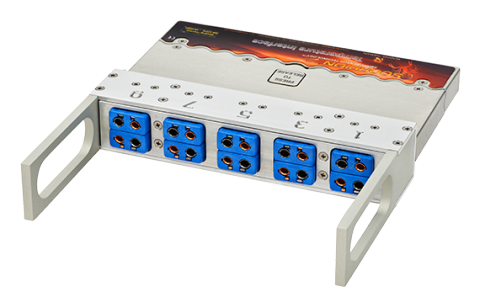What is the best method for complying with the FDA’s FSMA requirements? Reading Thermal’s innovative SCORPION® 2 Data Logger will help your bakery stay in compliance with kill-step validation rules.
Reading Thermal, headquartered in Sinking Spring, Pennsylvania, has been focused on measuring and researching the commercial baking process for more than 25 years. We manufacture and support the SCORPION® 2 Data Logger which has become a standard in the baking industry.
The SCORPION® 2 enables you to monitor actual in-process conditions and get the critical information you need to correct problems and maintain optimum process control. This powerful diagnostic tool has become an industry standard for understanding and improving your proofing, baking, cooling and freezing processes.
Why Validating the Kill Step is Important?
As consumers focus more closely on what they’re eating, they are putting a premium on safe food. They want to eat high-quality food made of high-quality ingredients without fearing any adverse effects or food-borne illness. Kill-step validation:
- Helps achieve maximum food safety and protect consumers.
- Helps meet the safety standards (e.g., five log reduction of pathogenic coli/Salmonella) set by regulatory agencies.
- Helps determine effective treatment.
- Saves food industry millions of dollars by avoiding recalls and other legal penalties due to foodborne illness outbreaks.
- Reinforces consumer confidence.
- Supports business success.
What the Data Logger Can Measure
Connecting smart sensors and sensor arrays to the SCORPION® 2 Data Logger and passing them through the oven with the product, enables the measurement system to capture the four main baking parameters:
1) Temperature: Oven temperature affects oven-spring, drying/dehydration, and color formation during baking. Insufficient or excessive temperature can also lead to undesirable changes in texture and taste. The Scorpion® 2 Temperature Sensor Array measures temperature at product level, in fixed positions across the conveyor, and delivers a precise picture of temperatures from side-to-side and end-to-end.
2) Heat flux: Oven heat flux is the best indicator of oven performance during baking in terms of the product. Many bakers use the measurements from the SCORPION® 2 Heat Flux Sensor when attempting to produce the same product on two different lines or when trying to transfer product from one line to another. The two lines will produce the same product when the heat flux profiles match.
3) Air velocity: In a radiant oven, the airflow comes from the moving conveyor, the exhaust system, and natural combustion air currents. In a convection oven, the airflow comes primarily from the air distribution plenums. Measuring the oven air velocity with the SCORPION® 2 Air Velocity Sensor is critical because airflow influences the coloration, texture, firmness, and baking time of the final product. The profiles will help you spot airflow differences that result in inconsistent baking.
4) Humidity: Products passing through a thermal process interact with the moisture in the environment. The moisture affects finished product quality in many ways; e.g., the moisture remaining in a pretzel after baking can impact its shelf life; reducing evaporation can keep the surface of your cookies moist, allowing them to stretch without cracking. The SCORPION® 2 Humidity Sensor measures the absolute moisture content of the thermal environment in both heating and cooling processes.
The state-of-the-art SCORPION® 2 from Reading Bakery will help you when complying with FSMA requirements for kill-step validation. Contact us online, or call us at (610) 678-5890 Ext. 2 to learn more.

